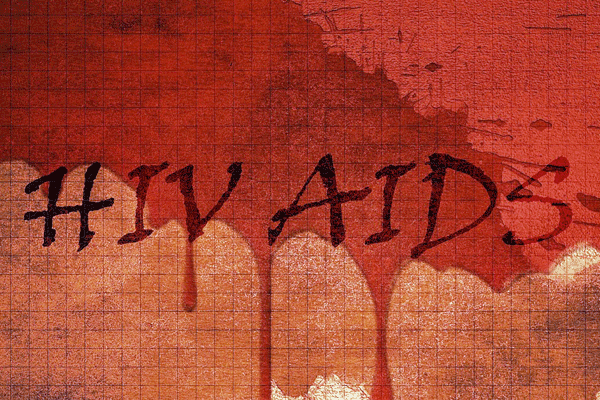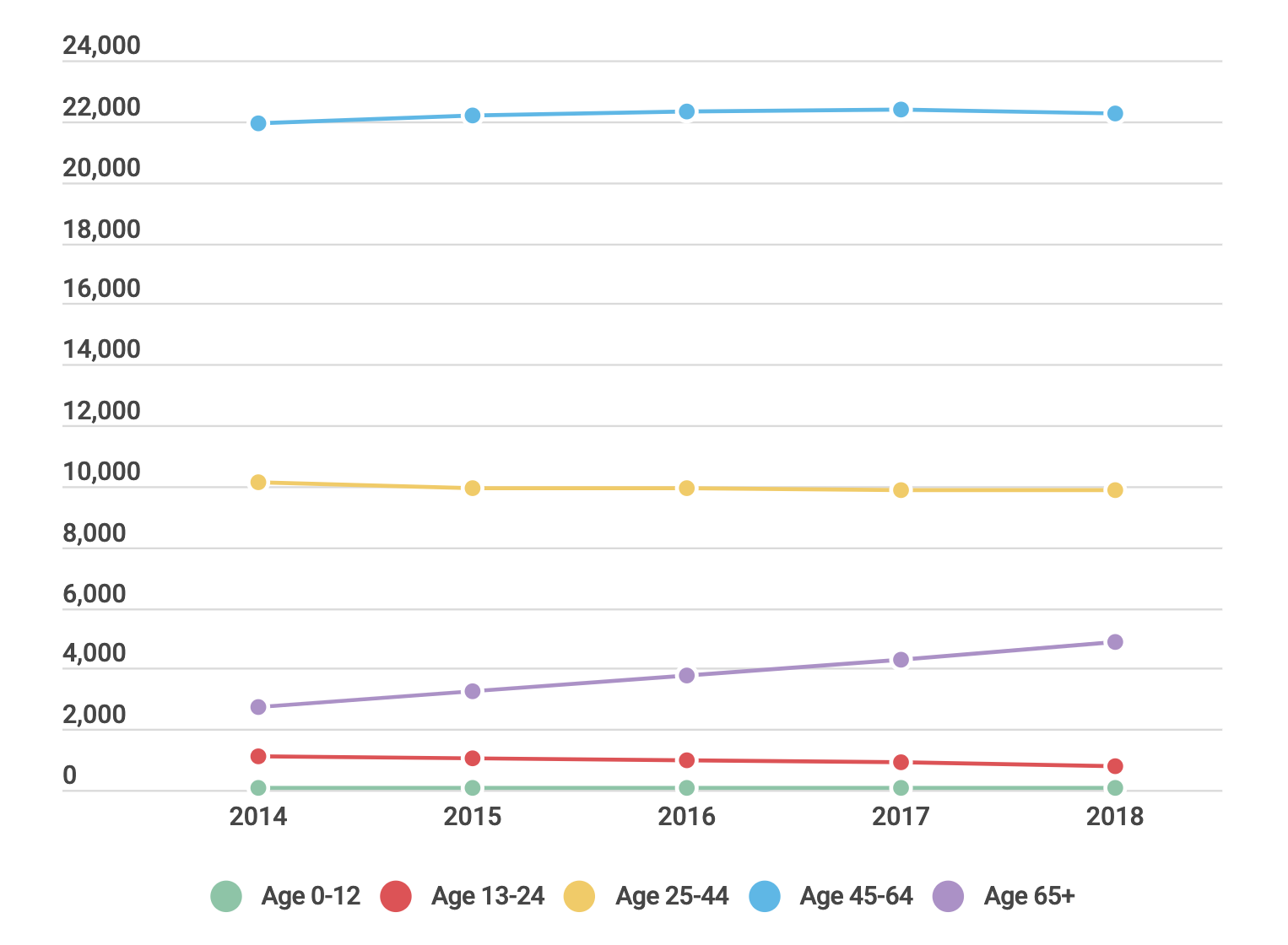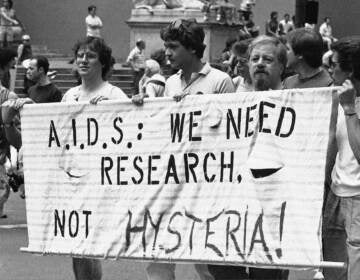Preliminary data shows record drop in New Jersey’s HIV/AIDS cases
An action plan is being finalized to meet Gov. Phil Murphy’s goal of ending new infections by 2025.

It is not yet clear what might be driving down new cases. (Creative Commons)
This article originally appeared on NJ Spotlight.
–
New Jersey appears on track for a record drop in new HIV/AIDS cases this year. Newly diagnosed infections are down nearly 40% since 2017 alone, according to preliminary state data shared with NJ Spotlight in advance of a World AIDS Day commemoration today at Rutgers University in Newark.
The news comes as an action plan is being finalized to advance Gov. Phil Murphy’s goal, outlined one year ago, to end new infections in New Jersey by 2025 as part of a global campaign to reduce stigma and increase access to medical care and support services. AIDS advocates involved with the process hope the final version will be released early next year.
While it is not yet clear what might be driving down new cases, those involved with AIDS policy note that New Jersey has worked to expand access to testing, treatments and preventive medications; they also credit increased public awareness and the continued dedication of local AIDS groups. The state has also grown the network of community-based needle exchange programs that have proven successful in reducing the spread of HIV/AIDS and other infections; these sites distributed more than 640,000 clean syringes last year, officials said.
State Department of Health acting commissioner Judith Persichilli is expected to address some of these efforts at the Rutgers event, entitled HIV Politics & Policy: A Solutions-Based Approach and hosted by the schools of public health and nursing. She also plans to discuss the process of developing the plan and the need for stakeholders to work together to address this complicated issue in ways that will save lives and eventually put an end to the epidemic, state officials said.
In addition, Persichilli will discuss how the new plan will build on the existing infrastructure of HIV/AIDS programs, and “expand programs that have been effective as well as develop new ones where gaps have been identified,” according to the DOH.
In Persichilli’s statement, she will stress that “In order to truly make an impact on New Jersey’s HIV epidemic, the state must address the social and political determinants of health that drive negative health outcomes for its most marginalized and vulnerable populations including racial, ethnic and cultural minorities.”
Greater access to treatment
She noted that New Jersey has made “great strides” reducing the number of new HIV cases and increasing access to prevention and treatment therapies in a press release DOH issued last week. New diagnoses went from 1,541 in 2007 to 1,124 in 2017, she said.
According to preliminary DOH figures, the number of new cases has continued to decline, reaching 1,095 in 2018 and just 338 for the first six months of this year. If extrapolated to a full year, this would mean just 676 cases for all of 2019, which would represent the largest decline in more than a decade, 40% — and possibly the largest year on year decline ever in the Garden State.
Health department officials caution that data are not complete for 2018 and 2019 and cases continue to be reviewed, a process that could take a year or more. But advocates said if this pattern holds, the decline will be significant. “That’s a huge drop,” said Kathy Ahearn-O’Brien, executive director of the Hyacinth Foundation, a leading AIDS service organization, who co-chaired the task force working on the state plan. “Those are great numbers.”
New Jerseyans with HIV/AIDS

Overall, there are more than 38,000 New Jerseyans living with AIDS (Acquired Immune Deficiency) or its predecessor HIV (Human Immunodeficiency Virus), according to state figures. Almost all patients — regardless of age, race, or the origin of the disease — are living longer than they were even four years go, except for those who use intravenous drugs. However, there is a tremendous racial disparity in HIV/AIDS cases; while there is one diagnosis for each 645 white residents, the rate is one in 171 for Hispanics and one in 65 for non-Hispanic black citizens.
But the governor has said the state could do more to control the spread of HIV/AIDS and support those already diagnosed, in part by reducing the stigma that still clings to the disease. On Dec. 1, 2018 New Jersey became the ninth state to join the global Prevention Access Campaign. Also known as Undetectable = Untransmittable, or U=U, the campaign is based on science that shows proper treatment can reduce a patient’s AIDS virus to a level where it can’t be passed on during safe sex.
Murphy’s announcement last year came with a pledge to end new HIV/AIDS cases within seven years, a promise that requires a detailed plan to become reality. In April, the DOH assembled the Task Force to End the HIV Epidemic, which held interactive webinars and public forums in several hard-hit communities to solicit input on a strategy. The task force created a draft plan that is now under review by the governor’s office; participants said whatever is approved will then need to be implemented with a specific strategy, which must still be developed.
Testing, treatment, and prevention
The state has also continued to invest in local HIV testing, treatment and prevention programs, including nearly three dozen pre-exposure prophylaxis or PrEP programs, which provide daily medication that prevents HIV from spreading. According to DOH, last year these services provided testing for more than 74,000 residents, distributed HIV treatment medications to more than 5,000 residents and linked nearly 900 individuals with PrEP.
According to those involved with its drafting, New Jersey’s pending plan will support these existing pillars by calling for insurance coverage for routine testing and all HIV/AIDS medications. In addition, it will seek to further reduce the stigma around the disease and enhance respect for patients, while breaking down the barriers to comprehensive care so that diagnosed individuals can also get help with addictions, mental health issues or other medical conditions.
“The plan does recognize that there are social inequities that drive this epidemic,” said Dean Perry N. Halkitis, a professor at Rutgers School of Public Health and director of the Center for Health, Identity, Behavior & Prevention Studies, who also served on the task force. “Meds alone are not enough” to combat the disease, he added.
Ahearn-O’Brien and her colleagues at Hyacinth hope the plan will include provisions to ensure newly-developed pharmaceuticals — which are often more costly — are fully covered by Medicaid, which insures six in 10 AIDS patients with insurance. They also want a full review of state statutes to eliminate language that essentially criminalizes HIV/AIDS based on outdated science, like a current law that allows someone to file charges against a sex partner if that person did not disclose their status as positive.
That said, Ahearn-O’Brien said she had not seen a final version of the plan, which the task force submitted to state officials in a draft form in late spring. The change in leadership at the DOH — former Health Commissioner Dr. Shereef Elanahal left in July — may have delayed review of the plan, she said, but the process is advancing. “I think it’s following the path it should — other than that the task force hasn’t seen [the final product],” Ahearn-O’Brien noted.
Halkitis, however, suggested the process was on track and following a similar path as the plan developed in New York State, in which he also participated. For that 2017 blueprint, also based on the U=U campaign, more than 60 recommendations were identified and analyzed through a multiyear process that involved five committees and many public meetings.
“I think the state is moving in the right direction,” said Halkitis, who is hosting the Rutgers forum today. “This plan comes with a price tag and AIDS is not the only health crisis the people of New Jersey are facing,” he said.
“Everything doesn’t get solved overnight,” Halkitis added. “That’s the process. And eventually pieces of the plan get realized and they continue to be realized.”
Halkitis and Ahearn-O’Brien said the New York plan, as well as strategies in Massachusetts and California, helped inform their work in the Garden State. The New York strategy prioritizes efforts to reach underserved populations, respect diverse populations and connect patients with comprehensive care, in addition to preventing new infections and improving care for those already diagnosed — issues that are also priorities for AIDS advocates in New Jersey.
“I don’t think our plan re-created the wheel,” Ahearn-O’Brien noted.
WHYY is your source for fact-based, in-depth journalism and information. As a nonprofit organization, we rely on financial support from readers like you. Please give today.




